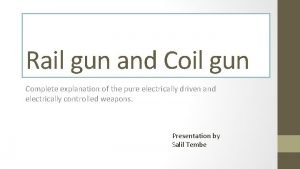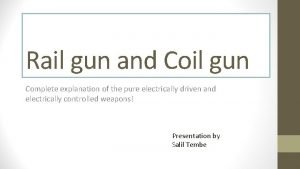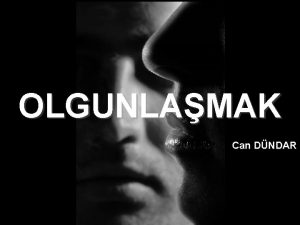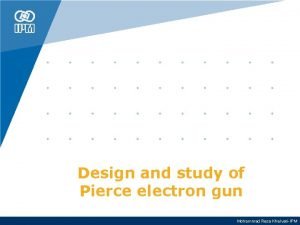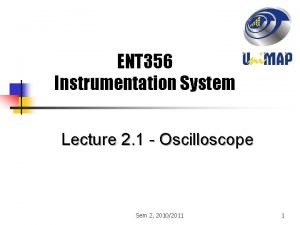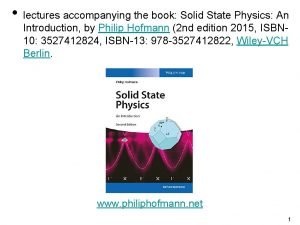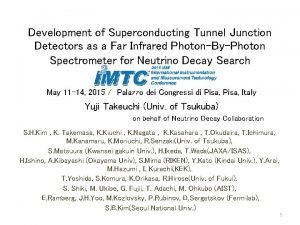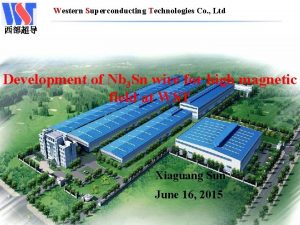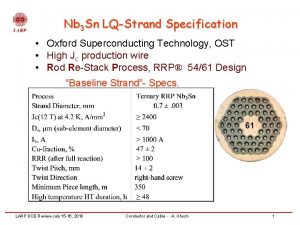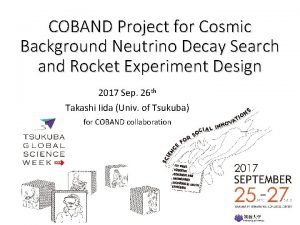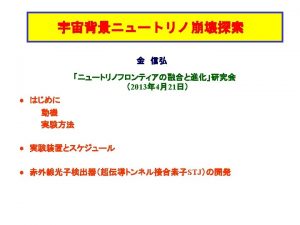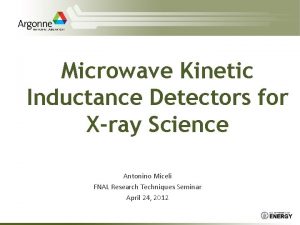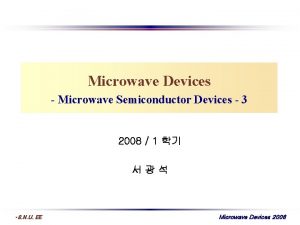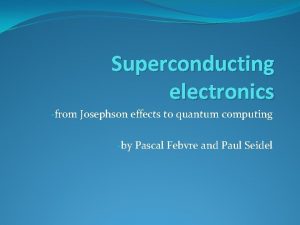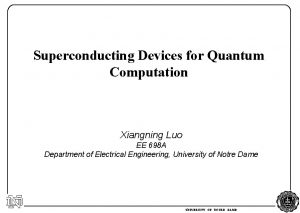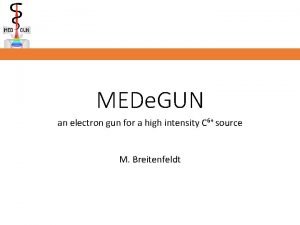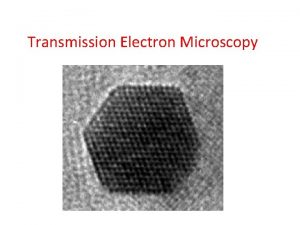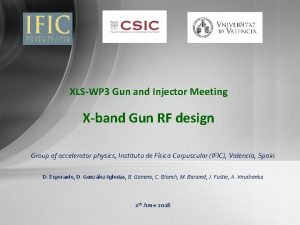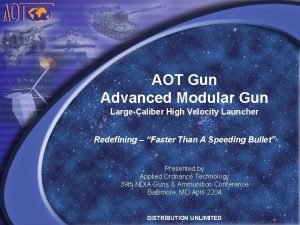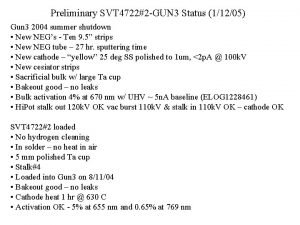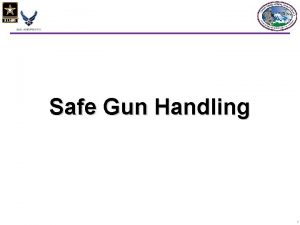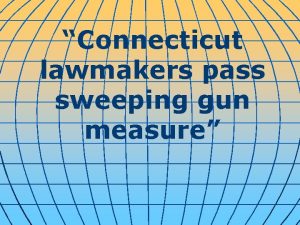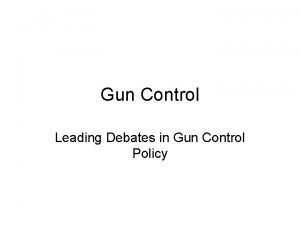THE WISCONSIN SUPERCONDUCTING RF ELECTRON GUN UPDATE R
















- Slides: 16

THE WISCONSIN SUPERCONDUCTING RF ELECTRON GUN UPDATE R. Legg (JLab); J. Bisognano, R. Bosch, D. Eisert, M. Fisher, M. Green, K. Jacobs, K. Kleman, J. Kulpin, G. Rogers (UW-Madison/SRC); J. Lawler, D. Yavuz (UW-Madison Physics); T. Miller (UIUC) March 6, 2012 DOE Award # DE-SC 0005264

Starting Point: Next Generation VUV/Soft X-ray Source § Probe physical, chemical, and biological systems on their critical temporal, spatial, and energy scales—femtoseconds, nanometers, and millivolts § Performance goals § Full 6 D coherence § Short pulses § High repetition rates into megahertz § High peak and average flux § Tunability and polarization control § Many beamlines operating independently and simultaneously to spread costs § Superconducting-linac-driven FEL “farm” is an ideal solution § CW § Naturally a coherent process § Seeding ensures temporal as well as transverse coherence

Key Gun Parameters • • • Electric field at cathode – up to 45 MV/m Peak surface magnetic field – 93 m. T Dynamic power loss into He – 39 W at 4 K Q – 2. 5 E 9 Frequency – 199. 6 MHz Key Bunch Parameters • • • RMS bunch length at gun exit – 0. 18 mm Cathode spot ~1 mm for 0. 85 mm-mrad thermal emittance (Cs 2 Te) At gun exit, dp/p ~ 2. 5%, divergence – 7 mrad Q – 200 p. C Kinetic energy – 4. 0 Me. V With smaller spot, can be operated in lower charge modes with lowered emittance 3

CW Electron Gun is Critical Component Wisconsin SRF e-gun

Wisconsin SRF Electron Gun Progress Preparations for final e-beam weld Bake at JLab to prevent Q-disease 5

Cold Test of Cavity at Niowave Completed and Installation into He Vessel Under Way 6

February 7 Acceptance Test Successful § Cryogenic acceptance test at Niowave successfully completed § Test results § Low field Q 0 of 3 109 , as predicted by modeling § Gradients in 10 MV/m range obtained, limited by test configuration (limited RF power, test coupler, and pumping) § The cavity showed initial multipactor and field emission but both continued to process throughout the test § Field is expected to substantially improve with continued processing after final assembly at Wisconsin § This test marks a major milestone in the SRF gun program, demonstrating both Q 0 and the potential for high gradients in the gun after final processing planned at Wisconsin 7

Q 0 vs EACC results cavity Q 1010 R/Q = 147 Ω 109 Gap in the data here shows conditioning progress from one run to the next. 108 107 0. 0 0. 1 0. 2 0. 3 0. 4 0. 5 integrated voltage (MV) 0. 6 8

Frequency Map § Map which starts with a cold cavity at the correct frequency and moves back through the series of production steps producing an expected resonant frequency at each step § Actual cavity frequency was 199. 47 MHz due to sign error in permittivity change from air to vacuum; corrected after test FEA to Evaluate Stress and Deformation Freq, MHz State Nominal, 4 K 199. 58953 Remove 1600 lb preload on tuner 199. 65256 D Freq, MHz - 0. 06303 Volume, in^3 D volume, in^3 6269. 213 6267. 753 -1. 46 Warmed to 273 K 199. 3704 -0. 28216 6294. 653 Skin depth vs temp at 200 MHz 199. 3185945 -0. 05180 6295. 853 26. 9 Remove vacuum load 199. 2485945 -0. 07 6300. 243 Change in permitivity, fvac/fair 199. 1947645 -0. 05383 6300. 243 4. 39 Undo BCP etch 199. 3688075 0. 174042 6282. 793 Final weld shrinkage, 0. 7 mm 199. 280 -0. 088 6294. 87 -17. 45 1. 2 0 12. 08 TABLE 1. Steps from cavity blank to final frequency 9

High TC Solenoid § Specification developed from early field maps § And then we simulated. A lot. § Danfysik fabricating now, delivery in April / May 2012 10

RF Coupler, HPA and LLRF § Power is introduced through a ceramic rf window and a tuned resonant structure. § Relatively low power, <10 k. W, at 1 m. A of beam Harris Corporation Broadcast Communications Division § 20 k. W solid state amplifier procured Based on Jlab 12 Ge. V upgrade module 11

Photocathode laser installation week of February 13 12

Test Vault Preparations at UW RF Photocathode Laser Electron Gun and Beam Diagnostic Line Clean room for cryomodule assembly

Current Scope § Demonstrate single bunch beam dynamics and operation of SRF gun § Low repetition rate drive laser § Allows option of using doubled or tripled Ti: Sapphire laser § Cu Cathode Used for Initial Operation § Little chance of cavity contamination from evaporated cathode material § Cathode will not degrade over time like semiconductor § No cathode preparation chamber needed 14

Summary § Wisconsin SRF electron gun development moving forward as planned § Offers attractive capabilities as CW electron source for FELs and other applications § In the fall, we hope to have made our first low emittance electron bunch 15

Coming Attractions • R&D on photocathode materials, including novel approaches, by Angle Resolved Photo Emission Spectroscopy (ARPES) studies on the Aladdin storage ring at SRC • Studies of the laser high harmonic generation (HHG) process for seeding, and other laser beam interactions Bi thin film in the rombohedral phase. The surface state ~0. 4 e. V below the Fermi edge (blue spot) only has +2° emission angle. This involves accessing a specific surface state without thermalization. G. Bian, T. Miller, and T. -C. Chiang, Phys. Rev. B 80, 245407 (2009) 16
 Coil gun vs rail gun
Coil gun vs rail gun Rail gun vs coil gun
Rail gun vs coil gun Kötü gün sözleri
Kötü gün sözleri What is an alternative of log based recovery
What is an alternative of log based recovery Egun shotgun railgun
Egun shotgun railgun Crt electron gun
Crt electron gun Diamagnetic levitation
Diamagnetic levitation Stj
Stj Western superconducting
Western superconducting Oxford superconducting technology
Oxford superconducting technology Coband
Coband Superconducting
Superconducting Superconducting tunnel junction
Superconducting tunnel junction Superconducting energy gap
Superconducting energy gap Superconducting tunnel junction
Superconducting tunnel junction Superconducting electronics
Superconducting electronics Superconducting devices in quantum optics
Superconducting devices in quantum optics
